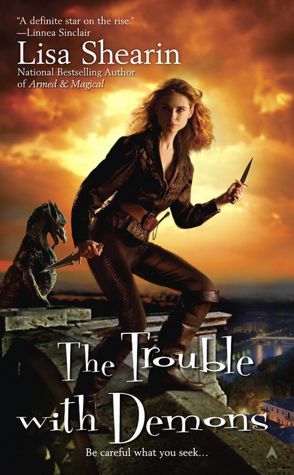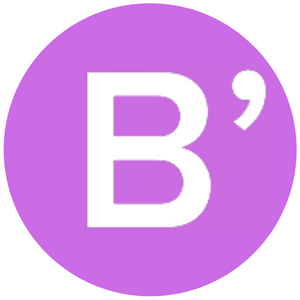 Can you tell us about your background as an artist? When did you decide art was what you wanted to do; when did art become a passion? What and where did you study?
Can you tell us about your background as an artist? When did you decide art was what you wanted to do; when did art become a passion? What and where did you study?My mother is an artist and loved to paint when I was young. She would set up still life arrangements on the kitchen table when I was 7 or 8 and we would paint them. Then when I was 12 I had my first formal art class and loved it. It’s been my passion ever since. I would draw for hours and became interested in figure drawing around age 16. I was blessed to have an amazing, creative and inspiring art teacher all through middle and high school, Helen Brainerd. She still teaches there, after a hiatus, and her students have shows regularly at the Oakland Museum.
I received BA in Fine Arts from the University of California at Berkeley. Then studied illustration in Boston Massachusetts and then at the Academy of Art in San Francisco. After creating a portfolio, I started freelancing for local magazines and publishers in the San Francisco Bay Area as well as advertising agencies. Soon I started working with Pinnacle Books in Los Angeles. Eventually I started working with New York publishers. I continued to do some advertising but put more attention to creating book covers because I found it more creative.
 What was your first big break as a book cover illustrator?
What was your first big break as a book cover illustrator?My first big break into creating paperback covers came when a fellow artist friend who was doing paperback covers for Pinnacle Books recommended I go see the head art director, Joe Curcio. They had an office in LA at the time which was easy for me to get to. He was wonderful and assigned me a romantic mystery right away. Then I did some westerns for him and a series of men’s adventures. After that I flew to New York, got an agent and started doing more covers.
 Could you please describe the general process of creating a book cover?
Could you please describe the general process of creating a book cover?The process for creating a cover varies a little depending on the book’s importance and the publisher as each has its own protocol. Sometimes I get a manuscript to read and find inspiration, sometimes I get fact sheets with very specific descriptions of scene, characters, clothing and occasionally color scheme. Whatever the source of my information for the cover, I start by thinking of the mood and drama of the scene. Generally I think about possible color and value schemes at this time too. I’m also reaching for something a little different as well. Then I gather research for the background elements and sketch out ideas for poses of figures if there are figures. Next I look at all that I have and start thinking about the shapes that would make a strong composition that will grab someone’s attention. Then I start putting things together always keeping in mind the story I am telling and the impact of the illustration I’m creating. I continue refining until I have something I like and think will sell the book. I often create a few ideas for the art director. I wait for his response and finish up after that.
 What inspires you when working on a book cover?
What inspires you when working on a book cover?The inspiration for a cover comes in many different ways. Sometimes I have an idea for a composition or color theme I’ve wanted to explore and the right cover comes along that gives me the opportunity to try it. Other times the story itself has fantastic or interesting imagery that is inspiring. Then there is always the times when an art director has a great idea that I feel fortunate to be able to bring to life.
 When your covers require the presence of the book’s characters, do you use models or are they computer generated?
When your covers require the presence of the book’s characters, do you use models or are they computer generated?When there are figures on a cover I always use models. I get direction for their clothing, hairstyle, and looks from the book, tip sheet or art director. Choosing the right model is critical. They must be able to act as well. Then choosing the right shot from the photo shoot is essential to really draw the reader in. When I have the chance, it’s also great fun to create creatures or work on humanizing animals.
What is your favourite of all the covers you have designed? And the most
 challenging?
challenging?There are a few covers that I’d rank as my favorites. They are the ones where there is some emotional drama coming from the figure. The most challenging covers are the ones where I feel I’m over art directed. In other words where I have to put in very specific elements (often too many), follow a specific color and value scheme, and pose the figures in very specific poses. It’s extremely hard to make it work. I like it best when I have lots of freedom. Sometimes the best covers are the simplest compositions having the simplest colors.

You have designed fantasy, romance, landscape and still life covers. What is your favourite genre/style to work for?
I like working in all the genres that I’ve been given the opportunity to try. There’s something special about each one. At different times in my career, each has been my favourite. I love change and working in many genres keeps me changing and growing.
Can you tell us how you came up with your visions for the covers Lisa Shearin's novels Magic Lost, Trouble Found, Armed and Magical, and her upcoming release The Trouble with Demons? What specifically about the individual stories went into the art, if anything?
The covers for Lisa Shearin’s books were inspired by her manuscripts. She described a magical character with pointed ears in a unique environment. I did my best to capture the feeling and create imagery to match what she wrote. For the first two covers, I was reaching for the look of traditional fantasy. The third book however is a little different as the publisher wanted me to create a cover that would attract more of the demon readers. So it has a more aggressive pose and contemporary looking background. Once again I tried to match what was in the manuscript.
Do you create art for anything other than book covers?
Occasionally I create art for print ads and greeting cards in addition to doing book covers. I recently worked on ideas for a new TV show about medieval fantasy. And sometimes, but rarely, I paint for myself doing portraits of people I care about and still life.
 Is there anywhere fans of your work can buy prints or posters of your art?
Is there anywhere fans of your work can buy prints or posters of your art?Currently I don’t sell prints or posters of my work. Occasionally I sell original oil paintings. I think I need another 24 hours in a day to do all I want.
What genres do you like reading, and what would you recommend?
I love to read but lately haven’t been reading much fiction. I’ve gone through many genres during different times of my life. A good fantasy is hard to beat. I like reading well written history and biography because real life is often nearly unbelievable. This is where the need for that extra 24 hours a day comes in.

Thank you, Aleta for agreeing to this interview; It was really interesting finding out about the work you do! To see more of Aleta Rafton's brilliant artwork, be sure to check out her website AletaRafton.com and her agent's website.
The Trouble with Demons by Lisa Shearin will be released on 28th April.








0 comments:
Post a Comment